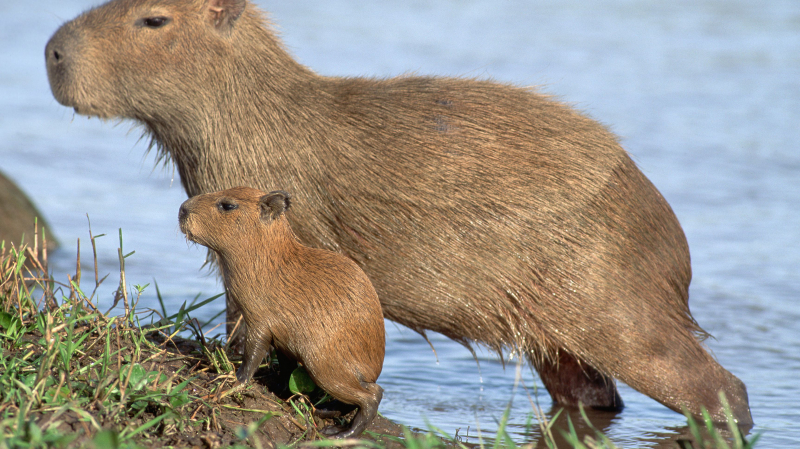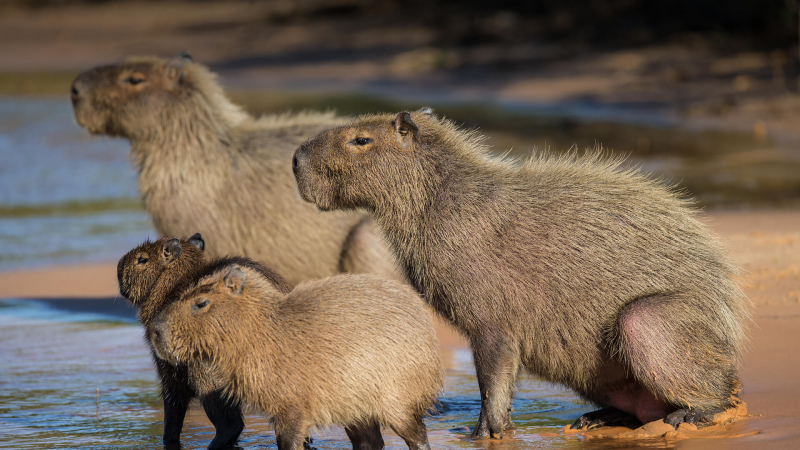Capybaras
The Capybara, also known as the greater capybara, is a large cavy rodent native to South America. It belongs to the genus Hydrochoerus and is the largest living rodent. The lesser capybara is the only other extant member. It is closely related to guinea pigs and rock cavies, and it is more distantly related to agoutis, chinchillas, and nutrias. The capybara lives in savannas, dense forests, and near bodies of water. It is a highly social species that can be found in groups of up to 100 people, but it usually lives in groups of 10-20 people. The capybara is hunted for its meat and hide, as well as for the grease produced by its thick fatty skin. It is not listed as a threatened species.
The capybara has a heavy, barrel-shaped body and a short head, with reddish-brown fur on top and yellowish-brown fur underneath. Its sweat glands are located on the surface of the hairy parts of its skin, which is an unusual feature among rodents.
They are extremely friendly, quick, and active. They share many characteristics with guinea pigs. They make excellent pets. They can be taught. They are excellent swimmers. They can eat vegetables as well as grass. Capybaras is one of the friendliest animals in the world.











